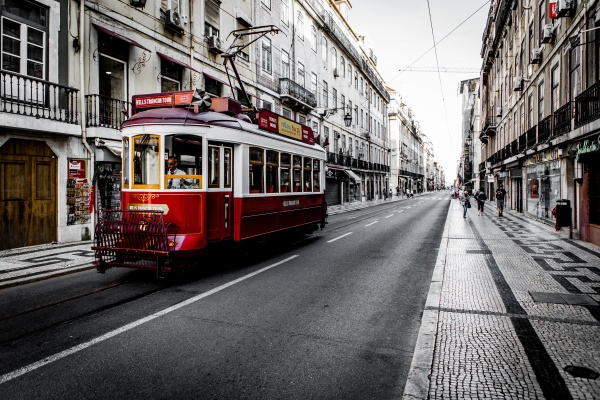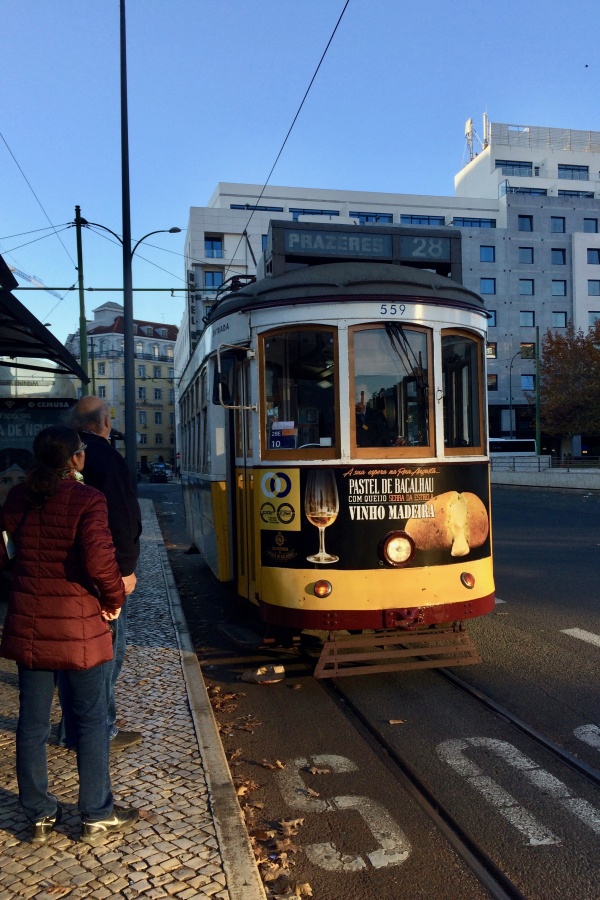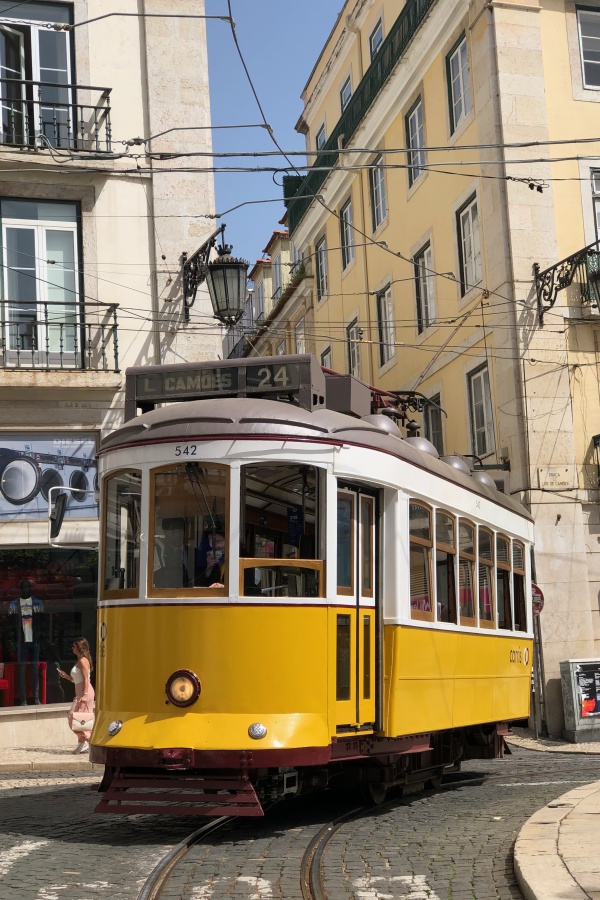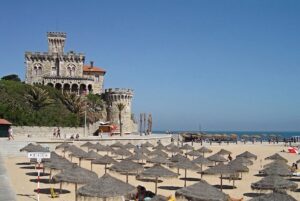Last Updated on November 29, 2025 by Emma Fajcz | Published: November 27, 2018
The clattering mustard-yellow trams are one of Lisbon’s most iconic symbols.
Anyone visiting Lisbon will stop and turn to the sound of a tram squealing its way on the rails through traffic. These antique electric vehicles are the city’s most photographed public transportation and Lisbon tram 28 is the star among them. Before hopping on a piece of Lisbon’s history, read Devour Lisbon’s tips.

1. Moderately Vintage
Carris, the company operating trams and buses in Lisbon, began using electric trams in 1901 but the ones you ride on today aren’t that old. Some were built between 1936 and 1947 and some between 1995 and 1996.
2. Lisbon Tram 28 is Public Transportation
Despite being advertised as the cheapest tour in Lisbon, tram 28 is actually public transportation. A lot of tourists tend to use it as a more affordable option than hop-on-hop-off buses, but that’s not a responsible way to visit the city and it takes away the tram from locals who depend on it on a daily basis. If you want the touristic option, look for the red trams doing tours on the same route.

3. Respect the Etiquette
A responsible tourism guide to Lisbon, or any other city, will be upfront about respecting the locals’ daily routines. The same goes for public transportation etiquette, inside and outside the tram. Respect the line, step back and wait for the next one if you’re not in a hurry, and give your seat to those who need it most. Following these rules is not that hard.
4. Purchase Tickets in Advance
One of the things to know before traveling to Lisbon is that you can buy a Viva Card in advance (€0.50) and top it off with cash instead of tickets. Not only are the tickets cheaper using this card, the public transportation Carris endorses this ticket buying method. Neither you or the driver have to struggle to get change and the line moves a lot quicker.
5. How to Beat the Crowds
If your desire to hop on Lisbon Tram 28 is to merely do the iconic route, then beat the tourist crowds by getting to the first stop, Martim Moniz, as early as possible in the morning. From 7 to 8 a.m. there’s practically one tram every 10 minutes. Lisbon trams are known for breaking down from time to time; therefore actual times may vary.
As an alternative, do the route in reverse starting in Campo Ourique (Prazeres) and ending in Martim Moniz. To reach Campo de Ourique, take the 709 bus from Restauradores and get off at the final stop.

6. Understanding the Stops
Usually, the last stop will say descida or terminal and the initial stop will say subida or início. For the tram 28, they won’t be too far apart. All passengers must hop off on the last stop, even if they plan to do the route in reverse. Passengers must leave the tram and join the line again on the initial stop.
7. Small Buses with a 28E Sign
It’s not unusual to see small buses with a 28E sign, which usually leaves visitors feeling confused. Yes, 28E is, in fact, a tram but it’s also a route. In case a tram broke down or is stuck in traffic because someone double parked on the rails, Carris must keep the route moving. If you’re waiting at the stop just to go from point A to point B, hop in. Your ticket will be valid.
8. Same Trams, Different Routes
Riding on the Lisbon tram 28 is indeed a memorable experience if you’re keen on that specific route. But at Devour Lisbon we’d like to challenge you to explore more, get to know that Lisbon off the beaten path. Tram 12E, for example, starts and ends in Martim Moniz, passing by parts of Alfama. Tram 18E starts in Cais do Sodré and takes you through the lesser-explored areas of Santos, Alcântara, and Ajuda (not available on Sundays and national holidays). Recently restored after 23 years, the tram 24E starts in Largo Camões, takes you through Rato and Amoreiras (only accessible by Metro or bus before), and ends in Campolide.
Insider tip: The stop for 24E is the same for 28E in Largo Camões. The line, however, is much smaller.

9. It’s a Pickpocketer’s Heaven
Lisbon is a safe city, but pickpocketers are extremely organized and typically work as a family. For years, tram 28 was one of their favorite hangout spots. A small vehicle crowded with amazed tourists paying more attention to the views than their belongings was perfect. These days, most trams ride with one or two police officers in the back.








